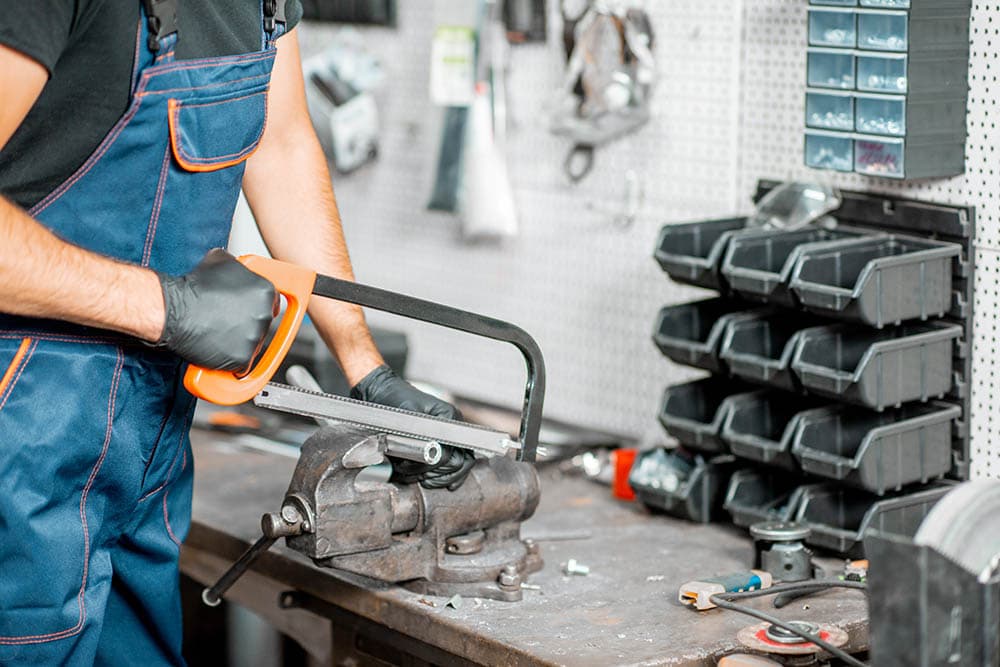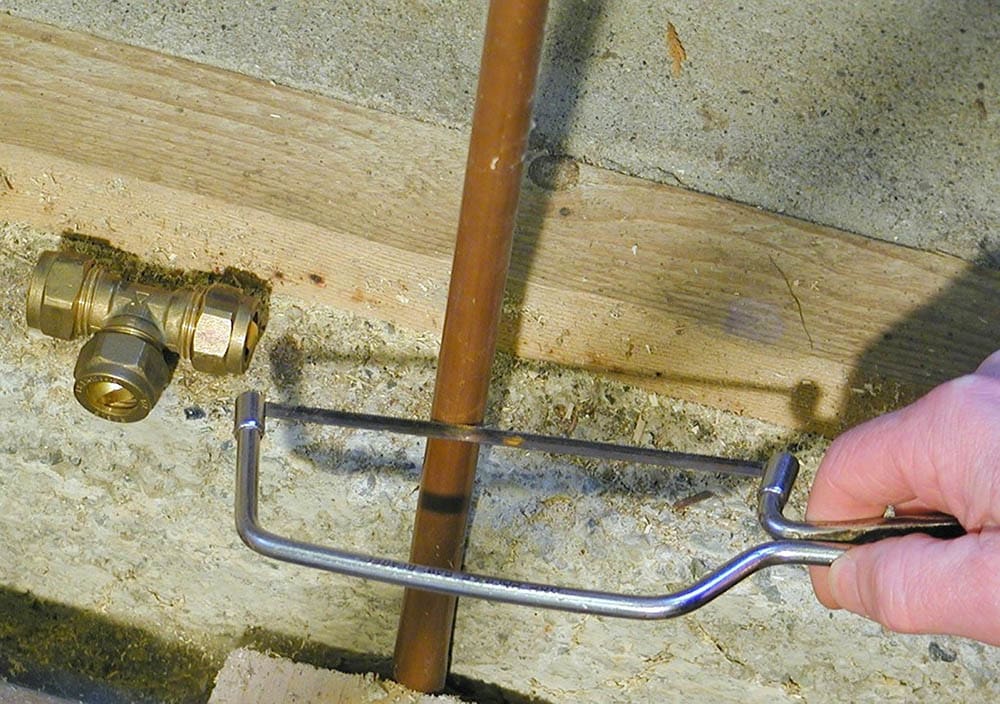How to Use a Hacksaw: 5 Tips & Tricks
-
Shea Cummings
- Last updated:

As long as you don’t mind working those arm muscles, a hacksaw is one of the cheapest and easiest tools for small metal and plastic cutting jobs. It’s an excellent tool for the DIYer to have in their kit, and it’s an everyday tool for most electricians and plumbers.
If you’ve never picked up a hacksaw in your life, this guide is for you. We will walk you through choosing the right hacksaw and making your first cut. From there, it’s just practice.
Picking the Correct Hacksaw
Before you get to the cutting, you’ll need to ensure you’ve got the right saw (and blade) for the job. The most common type of hacksaw consists of a frame and a blade. You can get powered hacksaws, but those are far more expensive and advanced. For this guide, we’ll focus on a good old-fashioned sandwich-powered saw.
In addition to the hacksaw choice, you’ll need to ensure you have the right blade on it. Each blade is measured by its length and teeth per inch (TPI). For example, if you’re cutting thin aluminum, you’ll want a blade with around 28 to 32 TPI; this will give you a nice cut. However, if you’re cutting a PVC pipe or something similar, you’ll want no more than 14 or 16 TPI.

Safety Precautions
The nice thing about a hacksaw is that there isn’t a lot that can go wrong with it when you use it properly. However, it’s still a tool, and you should wear some personal protective equipment (PPE).
A pair of leather work gloves or cut-resistant gloves are a good idea. The chances of any flying debris is low. Still, when working with any tool it’s typically a good idea to wear safety glasses.
The 5 Tips on How to Use a Hacksaw
For the sake of this guide, we’ve broken down making a cut with your hacksaw into five easy steps. However, once you’ve made a few cuts, you’ll be able to do this without thinking about it.
1. Mark the Material
There are several ways to mark metal. You can use a scribe tool or welder’s pencil; if all else fails, a piece of green painter’s tape will do the trick. If you’re cutting plastic, a black Sharpie will do the trick.
2. Secure the Material
Generally, making a cut with a hacksaw can take a bit, so you always want to secure the material you’re cutting. If the material moves, you could slip and cut yourself, scratch the material where you don’t want to, or you could even break the hacksaw’s blade.
A vise is the best tool for small metal pipes to prevent them from moving. However, for odd-shaped material, you’re better off using a clamp and attaching it to a workbench or other stable surface.

3. Make Initial Cut
Don’t just start sawing hard back and forth. Make a couple of forward strokes with minimal pressure to build a small groove for the blade to sit in. This prevents the blade from “walking” along the material as you saw.
4. Build Speed
Once you’ve got the initial groove, pick up your speed. Remember that if you’ve put the blade on the saw correctly, it will only cut on the forward stroke. So, apply steady pressure on the full stroke forward and lift the saw up to reset or simply slide it back without pressure.
As you get momentum, this process speeds up. For your first couple of cuts, take your time with the sawing motion and speed it up as you get more comfortable.
5. File Cut
Anytime you cut metal, the cut end will be razor-sharp. It’ll be sharp even if you’re using a high TPI blade that leaves a smooth cut. In fact, these cuts are usually the sharpest. So, once you’ve finished, take a file and round the edges to eliminate any burrs or jagged pieces.
Conclusion
Now that you know how to make a cut with your hacksaw safely, it’s time to practice. Don’t worry too much if the first couple come out crooked. It takes a bit to get the hang of keeping a flexible blade straight as it cuts.
Featured Image Credit: antoniodiaz, Shutterstock
Contents
